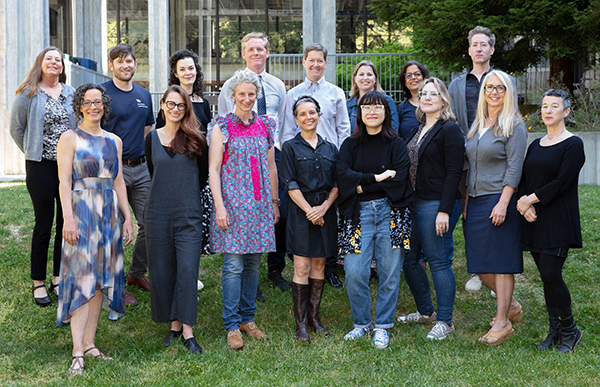The Center for Innovations in Teaching and Learning (CITL) and Online Education (OE) have merged and become the Teaching and Learning Center (TLC). By joining two units that have been close partners over the past years, the merger officially brings together the expertise of both units to support the campus as it navigates the contemporary instructional landscape and strives to become a learner-centered research university.
Founded in 2015, the original vision for CITL called for the new center to “provide an organizational structure for improvements to teaching and learning.” In launching this work, the Office of the Vice Provost for Academic Affairs and the Academic Senate Committee on Teaching also foresaw the need for pedagogy support to include technology-enhanced learning.
“Today, all instruction is technologically enhanced,” said Associate Campus Provost for Academic Success and former CITL Founding Director Jody Greene. “It no longer makes sense to have a separate unit which has most of the instructional design expertise, especially but not only in how to use technology to enhance student learning, and not have that be part of the work we do in the teaching center.”
The impact of the partnership between CITL and OE has expanded far beyond the original charge to include redefining access, addressing practices and policies contributing to inequality, prioritizing the call for educational accountability, and forefronting the continuity of instruction.
“I’ve watched as this partnership has extended the reach of the teaching and learning center and opened more pathways and connections across campus, demonstrating the necessity of this work and how it can and will transform UC Santa Cruz,” said Campus Provost and Executive Vice Chancellor Lori Kletzer. “The Teaching and Learning Center is our future, secured in a foundation that is CITL and Online Education.”
Under Greene’s visionary leadership, student success expanded to bridge the gap between thinking of student success and faculty success as different things, and rather as integral pieces of the same conversation. “Now we have a much more care-based and science-based approach to learning, and we take a more research and evidence-based approach to teaching,” Greene said.
Along with the merger, Greene stepped down as CITL’s faculty director after seven years leading the center through the first development phase. They are now the associate campus provost for academic success in the Office of the Campus Provost and Executive Vice Chancellor. Robin Dunkin, associate teaching professor in the Ecology and Evolutionary Biology Department, is TLC’s faculty director. Dunkin served as CITL’s assistant faculty director supporting Greene and partnering with center staff to develop and deliver faculty workshops, the STEM Teaching and Learning Community, Project REAL and New Faculty Teaching Academy.
The TLC, located on the first floor of McHenry Library, will be an even more comprehensive center better positioned to serve all members of UCSC’s teaching community with integrated course design and redesign, promoting and assessing student learning, making equity data actionable, and rethinking how to evaluate and reward teaching on campus.
“We’re changing what it means to teach and learn by looking at how to shape the future of teaching so that faculty have the skills they need, and students have the right sort of experiences and knowledge for using educational technologies so they can thrive,” said Michael Tassio, assistant vice provost for educational innovation and former director of Online Education.
Working with partners across campus, including Institutional Research, Assessment, and Policy Studies (IRAPS) and Hispanic Serving Institutions (HSI) Initiatives, TLC will continue CITL’s leadership role in guiding the campus, a double minority-serving institution – HSI and Asian American Native American Pacific Islander – in exploring what ‘serving’ means, thinking about how to design curriculum and individual courses to be equity-based and socially and culturally informed and figuring out how to leverage technology, data and pedagogy to transform courses into an experience that maximizes learning for students.
Learn more about the Teaching and Learning Center on the website. To reach the staff, send an email to tlc@ucsc.edu.



